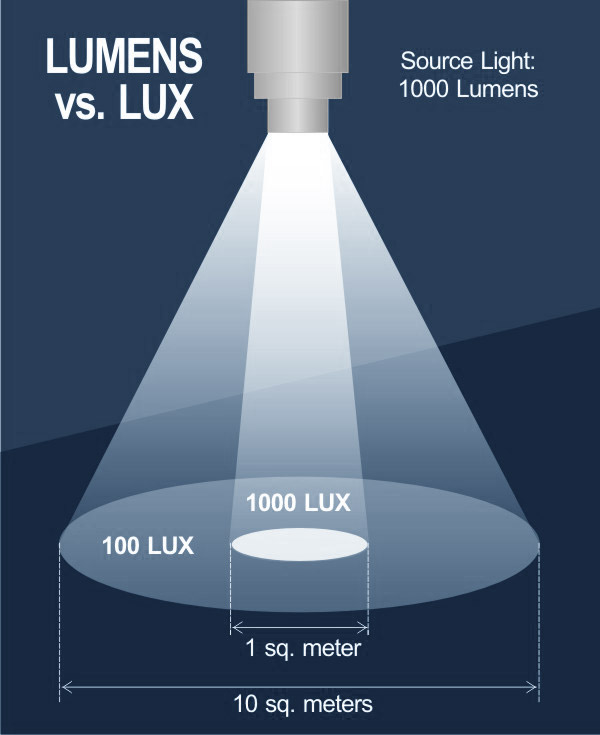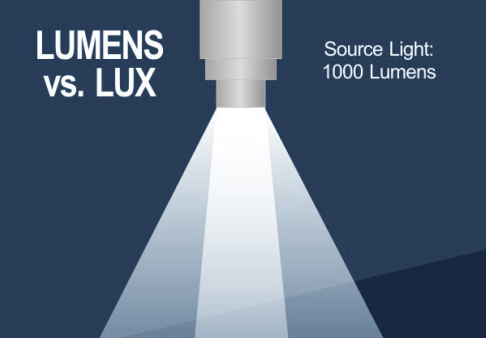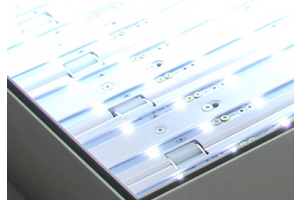What is the difference between lumens and lux?
In commercial lighting, sometimes you’ll see different units of measurement when it comes to the brightness of the light source. The two most common units of measurement for light intensity are lux and lumens. Let’s take a look at each of these approaches, and see how they relate to graphic lightboxes for displaying duratrans backlit film.
Lumens — In layman’s terms, the number of lumens generated by a light source is the total brightness or light intensity emitted by the source, regardless of size. One way to gain perspective on this is to imagine 1,000 tiny flashlights all clustered together at the eastern shore of a lake, to create a light source visible from the western shore. Now let’s place a single spotlight next to the cluster, to achieve the same result. Both sources may appear equally bright to the person on the western shore, even though one of the sources is really just a cluster of many not-so-bright sources. This is not a perfect analogy because no matter how many flashlights you add to the cluster, you may never reach the apparent intensity of the spotlight if you were to stare straight into it, but the amount of illumination that reaches the western shore from the cluster of tiny light sources could easily match that of the spotlight, if you keep adding tiny flashlights by the millions or however many it takes.

If we extrapolate this concept of lumens to backlit lightboxes, we must assume that larger lightboxes generally produce more lumens than smaller ones, and indeed this is the case. Of course this also depends on the brightness per same-size area, which is our next unit of measure to consider…
Lux (“light per area”) — Simply, the “lux” brightness value of one source can only be compared to another if the size of the source area is the same. For example, a value of 1 “lux” describes a certain level of brightness generated (or reflected) by 1 square meter of light source (or reflector). Lux is more difficult to measure than lumens, because of this requirement that the square area be made uniform, in order to compare different light sources. Also because of this difficulty, commercial lightbox fabricators generally do not scientifically measure the “lux” of their various lightbox models.
In practical terms, here are a couple of things you can keep in mind when shopping and comparing lightboxes in terms of brightness:
- Ask for lumens ratings and you’re much more likely to get a number you can use.
- Keep in mind that larger lightboxes produce more lumens just because there is more surface area, so if you really want to compare the brightness rating of two different lightbox models, they must be the same display size.
- Multiple lightboxes placed adjacent to each other will also achieve an automatic lumens boost, since it’s an additive value. This will translate to an apparent increase in brightness, not so much as you view the lightboxes on the wall, as the ambient light that they reflect off their surroundings. For example we have a hotel chain customer who requires a certain number of lumens of ambient light in their lobby, and so if they are installling our lightboxes and need more lumens, they can just supplement the order with additional lightboxes. This will lift the general atmosphere in the lobby to an overall brighter level because there will be more light reflecting off more surfaces.








